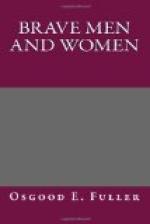“Among the Chinese, we meet with a tradition according to which they obtained their musical scale from a miraculous bird called Foung-hoang, which appears to have been a sort of phoenix. As regards the invention of musical instruments, the Chinese have various traditions. In one of these we are told that the origin of some of their most popular instruments dates from the period when China was under the ’dominion of the heavenly spirits called Ki. Another assigns the invention of several of their stringed instruments to the great Fohi, called the “Son of Heaven,” who was, it is said, the founder of the Chinese Empire, and who is stated to have lived about B.C. 3000, which was long after the dominion of the Ki, or spirits. Again, another tradition holds that the most important Chinese musical instruments, and the systematic arrangement of the tones, are an invention of Niuva, a supernatural female, who lived at the time of Fohi, and who was a virgin-mother. When Confucius, the great Chinese philosopher, happened to hear, on a certain occasion, some divine music, he became so greatly enraptured that he could not take any food for three months. The music which produced the miraculous effect was that of Kouei, the Orpheus of the Chinese, whose performance on the king, a kind of harmonicon constructed of slabs of sonorous stone, would draw wild animals around him and make them subservient to his will.
“The Japanese have a beautiful tradition, according to which the Sun-goddess, in resentment of the violence of an evil-disposed brother, retired into a cave, leaving the universe in darkness and anarchy; when the beneficent gods, in their concern for the welfare of mankind, devised music to lure her forth from her retreat, and their efforts soon proved successful.
“The Kalmucks, in the vicinity of the Caspian Sea, adore a beneficient divinity called Maidari, who is represented as a rather jovial-looking man, with a mustache and imperial, playing upon an instrument with three strings, somewhat resembling the Russian balalaika.
“Almost all these ancient conceptions we meet with, also, among European nations, though more or less modified.
“Odin, the principal deity of the ancient Scandinavians, was the inventor of magic songs and Runic writings.
“In the Finnish mythology the divine Vainamoinen is said to have constructed the five-stringed harp, called kantele, the old national instrument of the Finns. The frame he made out of the bones of a pike, and the teeth of the pike he used for the tuning-pegs. The strings he made of hair from the tail of a spirited horse. When the harp fell into the sea and was lost, he made another, the frame of which was birchwood, with pegs made out of the branch of an oak-tree. As strings for this harp he used the silky hair of a young girl. Vainamoinen took his harp, and sat down on a hill, near a silvery brook. There he played with so irresistible an




